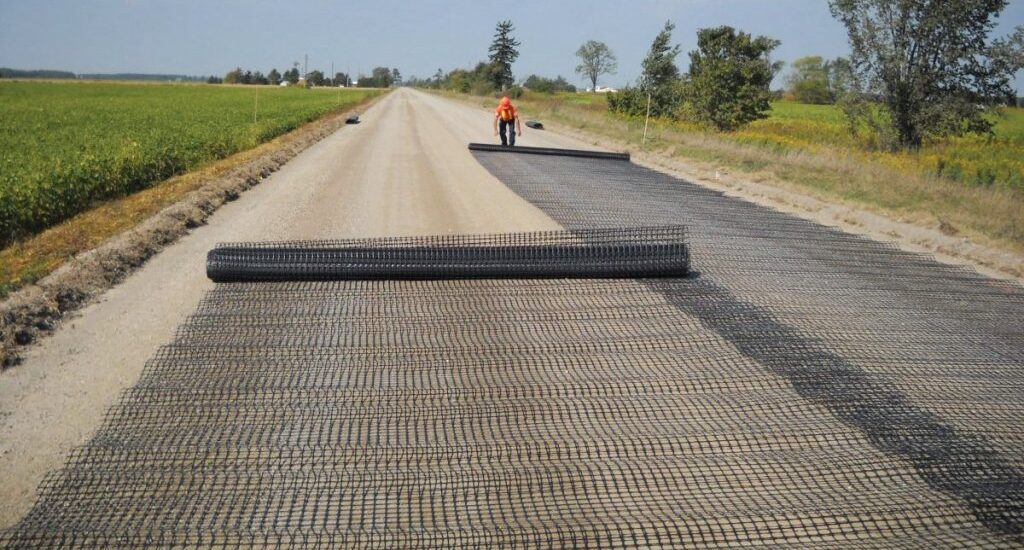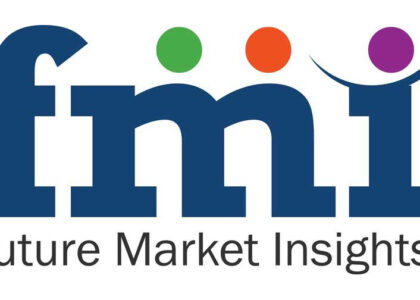The rise in infrastructure development all over the region is expected to drive growth in the market. The growth outlook between the period ranging from 2017 and 2021 was approximately 11.5% in South Asia. The South Asian Geosynthetics Market is expected to bolster at a phenomenal growth by witnessing a steady growth outlook of the magnitude of 12.2% over the projection period. The global market is estimated to be valued at US$ 1,404.6 Mn by 2022 and is predicted to reach US$ 4,441 Mn by 2032.
There is a consistent growth in the demand for geosynthetics owing to the growing demand from the construction sector, which incorporated road construction, erosion control, and others. Based on the current estimations, the market is to witness a growth outlook of about 12.2% between 2022 and 2032 in South Asia.
There is a surging awareness of applications in the construction industry which includes reinforcement, separation, containment, drainage, filtration, and sediment control is driving demand for the geosynthetics market.
The most popular destinations for the APAC region are among the ASEAN countries with regard to geosynthetics used in containment, separation, and waterproofing applications. Geomembranes are expected to be the most widely utilized geosynthetic product due to their popularity in this work and are estimated to have the highest share in geosynthetics used in this field.
Geosynthetic consumption in the South Asia region is anticipated to account for around 13% of the global demand.
Geosynthetics Market is forecast to register a CAGR of 10.1% between 2022 and 2029. The North American geosynthetics market accounts for around 25.8% share in 2022. Demand for Geosynthetic Products like Geogrids to Remian High in Road Segment
Request a Sample Copy of the Report @ https://www.futuremarketinsights.com/reports/sample/rep-as-3849
Key Takeaways
- Geosynthetic materials are massively utilized in various road development projects. These materials are utilized for subgrade separation and stabilization, base reinforcement, filtration & drainage facility, along with overlay stress absorption and reinforcement. Widespread application of geosynthetics in railway provides an improvement in stress propagation and offers stability.
- The government is taking various initiatives in order to improve the infrastructure of the country along with improving connectivity and enhancing logistics. From 2016 to 2017, the Indian government invested around US$ 14 Bn (INR 97,000 Crore) for road infrastructure development. At present, 28.64 km of roadways are constructed daily in India. In addition to that, the Indian government has announced National Infrastructure Pipeline (NIP) project with an overall budget of US$ 1.3 trillion, all these initiatives are anticipated to create substantial growth opportunities for the market.
- The market of geosynthetics is dominantly influenced by several macroeconomic, innovation, and demographic factors comprising infrastructure investment, urbanization, waste management, and a focus on a circular economy. Further, a rise in concern for wastewater management is expected to elevate the demand during the forecast period.
- There are widespread applications of Geosynthetics, they can be utilized for controlling leakages of contaminated liquid into rivers, aquifers, and groundwaters. Geosynthetics are utilized in several applications such as drainage, containment, material separation, filtration, reinforcements of structure, etc. are expected to create significant opportunities for the market in the coming years. All these aspects are considered for the forecast growth magnitude.
Competitive Landscape
Dominant market players are focusing on expanding their presence in countries where significant growth in the construction industry is being witnessed. Key market players are focusing on tie-ups with regional vendors, distributors, and construction companies to promote their products.
Furthermore, market participants are surging on innovating geosynthetic materials for specific applications. Several market players are concentrating on investing to decrease their carbon footprint and are utilizing plastic waste for the production of geosynthetic materials generating a trend of the circular economy.
Key Companies Profiled: –
- Hueskar Synthetic GmbH
- GSE Environmental Inc.
- Geofabrics Australasia Pty. Ltd.
- Tensar International Corporation
- Polyfabrics Australasia Pty. Ltd.
- NAUE GmbH & Co. KG
- Global synthetics pty Ltd.
- Others
Before Buying, Visit for Customization @ https://www.futuremarketinsights.com/customization-available/rep-as-3849
Geosynthetic Market Segmentation
By Product Type:
- Geotextile
- Geomembrane
- Geogrid
- Geonet
- Geosynthetic clay liner
- Geocomposite
- Other
By Material Type:
- Polyethylene (HDPE/LDPE/Others)
- Polypropylene (PP)
- Polyester
- Natural Fibers
- Others (PVC, Synthetic rubber, etc)
By Primary Function:
- Separation
- Drainage & Filtration
- Reinforcement
- Containment
By Application Type:
- Roads
- Railways
- Retaining wall
- Dams, Riverbacks,Waterworks
- Landfills and Erosion control
- Others
More Insights into the South Asia Geosynthetics Market
The government of India is concentrating on improving the infrastructure and construction services via expanding a part of the union budget allocation in infrastructure. The Ministry of Transportation and Highways of India (MoRTH) announced vital investment plans for road construction projects in the forthcoming years.
ASEAN is anticipated to exhibit lucrative opportunities in the South Asia geosynthetics market accounting for a share of 41.9% in 2022 in terms of value. Significant growth in the economic condition in prominent ASEAN countries is propelling the construction and infrastructure sector.
Table of Content
1. Executive Summary
1.1. Global Market Outlook
1.2. Demand Side Trends
1.3. Supply Side Trends
1.4. Technology Roadmap
1.5. Analysis and Recommendations
2. Market Overview
2.1. Market Coverage / Taxonomy
2.2. Market Definition / Scope / Limitations
3. Key Market Trends
3.1. Key Trends Impacting the Market
3.2. Product Innovation / Development Trends
4. Key Success Factors
4.1. Product Adoption / Usage Analysis
4.2. Product USPs / Features
4.3. Strategic Promotional Strategies
TOC continued…!
Related Links:
https://writeablog.net/ft6rkcar5o
https://www.xing.com/discover/detail-activities/6725554884.9dd5a4
https://nitrostrengthbuy.copiny.com/idea/details/id/112312
About FMI
Future Market Insights (ESOMAR certified market research organization and a member of Greater New York Chamber of Commerce) provides in-depth insights into governing factors elevating the demand in the market. It discloses opportunities that will favor the market growth in various segments on the basis of Source, Application, Sales Channel and End Use over the next 10-years.
Contact Us:
Future Market Insights Inc.
Christiana Corporate, 200 Continental Drive,
Suite 401, Newark, Delaware – 19713, USA
T: +1-845-579-5705
For Sales Enquiries: sales@futuremarketinsights.com
LinkedIn| Twitter| Blogs


